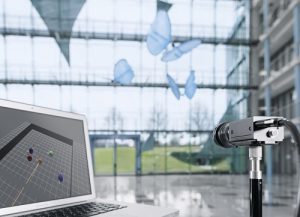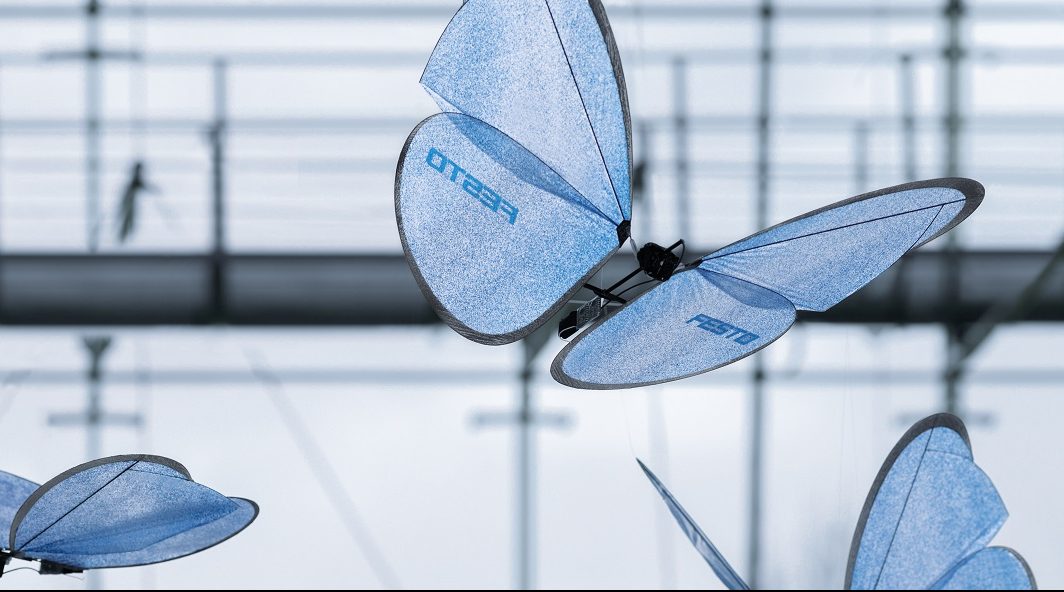The company Festo uses eMotion Butterflies to demonstrate the collective behavior of ultra-lightweight flying objects. The bionic butterflies illustrate complex topics from the world of future production such as functional integration, ultra-lightweight construction and above all real time-optimized networked communication between individual systems. The eMotion Butterflies vividly demonstrate how the virtual and real worlds can grow together.

The eMotion Butterflies vividly demonstrate how the virtual and real worlds can grow together. Source: Festo
Flying is a recurring theme in the Bionic Learning Network. The developers channeled their knowledge gained from former bionic projects and the so called eMotion Spheres into the bionic butterflies. They combine the ultralight construction of artificial insects with coordinated flying behaviour in a collective.
An external, well-networked guidance and monitoring system coordinates the individual flying objects autonomously and safely in three-dimensional space. The communication and sensor technology used constitutes an indoor GPS system that controls the butterflies’ collision-free collective movement.
The combination of integrated electronics and external camera technology with a host computer ensures process stability. To emulate the flight behavior of their natural models as closely as possible, the artificial butterflies are fitted with integrated electronics. These control the wings precisely and individually to affect the rapid flight movements. A human pilot is not required to control the eMotion Butterflies. Pre-programmed flight paths for the bionic Butterflies’ manoeuvres are stored on the host computer. By means of additionally stored behaviour patterns, however, they can also fly autonomously. In this case, there is no direct communication between the Butterflies.
The Bionic Learning Network is an example of Festo’s commitment to technical education and training. In cooperation with students, renowned universities, institutes and development firms, Festo sponsors projects along with test and technology carriers. The aim is to make automated movement processes even more efficient and more productive with the help of bionics. The Bionic Learning Network demonstrates fascinating approaches to solving complex tasks.

















